
Consumer Insights
Uncover trends and behaviors shaping consumer choices today
Procurement Insights
Optimize your sourcing strategy with key market data
Industry Stats
Stay ahead with the latest trends and market analysis.
The Expert Market Research report, titled “Fruit Pockets Manufacturing Plant Project Report 2026 Edition: Industry Trends, Capital Investment, Price Trends, Manufacturing Process, Raw Materials Requirement, Plant Setup, Operating Cost, and Revenue Statistics” includes various aspects that are critical for establishing a fruit pockets plant. These include infrastructure requirements, transportation requirements, utility specifications, and financial and economic analysis, among others.
As people become more aware of the importance of nutrition, they are actively seeking snacks that are both tasty and beneficial for their health, increasing demand for fruit pockets. A survey conducted by the International Food Information Council found that 73% of consumers consider healthfulness when choosing snacks. Fruit pockets, often made from real fruit and containing essential vitamins and fibre align perfectly with these preferences. For example, snacks made from dried fruits like apricots or cranberries not only provide antioxidants but also satisfy sweet cravings without excessive added sugars.
Convenience is another significant factor driving the popularity of fruit pockets. In today’s fast-paced world, busy lifestyles leave little time for meal preparation, prompting consumers to seek quick snack options. According to a report by Nielsen, 66% of consumers are looking for snacks that are easy to grab and go. Fruit pockets are portable, require no preparation, and have a long shelf life. This is particularly appealing to young professionals and college students who often rely on quick snacks during their hectic days. For example, a college student might choose a fruit pocket over a candy bar during a study session for a healthier energy boost.
Other elements to consider while establishing a fruit pockets plant include raw material sourcing, workforce planning, and packaging. The production of fruit pockets relies on several key raw materials, primarily fruit purees and natural sweeteners. Commonly used purees include mango, apple, and berry, with mango puree sourced from major producers like India and China, where ripe mangoes are processed quickly to maintain freshness and nutritional value. In addition, natural sweeteners such as honey and agave syrup are often incorporated to enhance flavour. Honey is widely produced in countries like the United States and China. Furthermore, biodegradable films or recycled cardboard are increasingly used to meet environmental standards. This shift is prompting many brands to commit to sustainable practices in their sourcing and packaging strategies.
Moreover, to help stakeholders determine the economics of a fruit pockets plant, project funding, capital investments, and operating expenses are analyzed. Projections for income and expenditure, along with a detailed breakdown of fixed and variable costs, direct and indirect expenses, and profit and loss analysis, enable stakeholders to comprehend the financial health and sustainability of a business. These projections serve as a strategic tool for evaluating future profitability, assessing cash flow needs, and identifying potential financial risks.
However, challenges such as fragmented supply chains and inefficient cold chain facilities may threaten supply stability for fruit pockets. These issues can lead to significant post-harvest losses, with studies indicating that up to 30% of fresh produce can be wasted due to inadequate handling and transportation systems. To combat this, manufacturers of fruit pockets can invest in integrated supply chain solutions that enhance collaboration among all stakeholders, from farmers to retailers. By establishing direct partnerships with farmers and using technology for better inventory management, manufacturers can streamline operations and reduce reliance on multiple intermediaries. Implementing advanced cold chain logistics can also mitigate supply chain risks by ensuring that perishable ingredients are stored and transported under optimal conditions. This not only preserves the quality of the raw materials but also reduces spoilage during transit. Such strategies ensure a steady flow of high-quality ingredients for fruit pocket production.
Fruit pockets are portable snacks typically made from pastry filled with fruit preserves or fresh fruit. They offer a delicious way to enjoy fruit on the go, often found in variations such as turnovers and hand pies. Historically, the concept of fruit-filled pastries dates to ancient civilisations, with evidence of similar foods in ancient Egypt and Greece. By the 16th century, sweet fruit pies gained popularity in England. Today, brands like GoGo squeez are offering fruit in pouches.
Fruit pockets feature a soft, chewy dough that encases fruit filling and has a moisture level of around 20-30%. Additionally, the packaging often includes breathable materials that allow for gas exchange, which can extend shelf life by preventing spoilage. Fruit pockets are rich in nutrients, with a typical serving containing approximately 5-10% dietary fibre and essential vitamins such as vitamin C and A, depending on the fruit used. The pH levels of the filling play a significant role in flavour and preservation; for instance, many fruits have a pH between 3.0 and 4.5, which can inhibit microbial growth and enhance taste. Furthermore, the ripening process of the fruit added in the product sometimes produce ethylene, a natural gas that further influences flavour and texture.
The process begins with raw material acquisition, where fresh fruits such as apples, berries, or peaches are sourced, typically requiring a minimum quality standard of 80% ripeness. Next, the fruits undergo washing and sorting, where they are cleaned to remove contaminants and sorted based on size and quality. Next, the fruits are peeled and de-seeded. Following this, the fruits are pulped, resulting in a pulp with a moisture content of around 70-80%. This pulp is then mixed with sugar and flavourings.
The next step involves filling the dough; the dough is rolled out to a thickness of about 1/8 inch and filled with approximately 30 grams of fruit mixture per pocket. After filling, the dough is sealed and crimped to prevent leakage during baking. The filled pockets are then subjected to baking at temperatures ranging from 350°F to 375°F (about 175°C to 190°C) for 15-20 minutes. Once baked, the pockets are allowed to cool for about 30 minutes to ensure proper texture before being packaged.

Read more about this report - REQUEST FREE SAMPLE COPY IN PDF
The fruit pockets market is driven by diverse applications, including snacks, desserts, and breakfast items, catering to the growing demand for convenient, on-the-go food options. Health-conscious consumers increasingly prefer fruit-based products that offer low-calorie alternatives and nutritional benefits. Government reports indicate that over 60% of consumers actively seek natural ingredients. Additionally, the rise of e-commerce platforms has made it easier for consumers to access fruit pockets, further boosting market growth.
Moreover, in 2024, the fruit pockets market is expected to witness the launch of new flavours. Anticipated flavours include tropical fruit combinations such as pineapple, passionfruit, and mango. Additionally, citrus flavours like blood orange and star fruit are gaining traction. Furthermore, unique combinations like charred peach, nectarine, and other stone and smoked fruit flavours are expected to emerge, providing consumers with innovative taste experiences.
A detailed overview of production cost analysis that evaluates the manufacturing process of fruit pockets is crucial for stakeholders considering entry into this sector. Furthermore, stakeholders can make informed decisions based on the latest economic data, technological innovations, production process, requirements of raw materials, utility and operating costs, capital investments by major players, pricing strategies, and profit margins. For instance, Saudi Arabia produces 64% of its fruit supply domestically, which amounts to over 1.2 million tons annually, presents significant opportunities for manufacturers of fruit pockets. With increased local fruit availability, producers can source fresher ingredients, potentially lowering costs and improving product quality. This domestic growth could also lead to a more competitive market.
Below are the sections that further detail the comprehensive scope of the prefeasibility report for a fruit pockets production plant:
Market Dynamics and Trends: Factors such as rise of e-commerce are significantly affecting market conditions in the fruit pockets sector. Online shopping platforms allow consumers to explore a wide variety of brands and flavours that may not be available in local stores. In 2024, ab estimated 150.7 million Americans engaged in online grocery shopping, representing approximately 58.6% of internet users in the country. In the latter half of 2024 alone, online grocery sales surged by 17.7% year-over-year, showcasing the shift towards digital shopping for food items. This accessibility encourages consumers to try different fruit pocket options, from traditional apple and cinnamon to more exotic flavors like mango chili or berry blends. Understanding these demands and trends helps businesses align their production plans in the fruit pockets market.
Geographical Analysis: As of 2024, the Russian Federation remains the largest producer of raspberries, with an annual production of approximately 197,700 tonnes. Following closely is Mexico, producing around 165,677 tonnes annually, while Serbia ranks third with about 110,589 tonnes. The United States contributes significantly as well, with a production volume of approximately 81,150 tonnes, primarily from states like California, Oregon, and Washington.
This high raspberry production offers opportunities for fruit pocket manufacturers by providing a reliable and potentially lower-cost supply of quality raspberries. However, increased domestic focus by Russian producers may limit export availability, potentially impacting global supply chains. To combat these challenges, fruit pocket manufacturers will need to establish strong relationships with local suppliers and consider diversifying their ingredient sourcing.
Profiling of Key Industry Players: Leading manufacturers in the fruit pockets market include Keventer Group, Tropicana, and Döhler Group. These companies have been focusing on expanding their product lines to include healthier options, such as organic fruit pockets made with non-GMO ingredients, to cater to the growing consumer demand for nutritious snacks.
Economic Analysis: Capital expenditure (CAPEX) analysis provides stakeholders the knowledge about required investments in advanced technologies, efficient machinery, and necessary infrastructure. Investing in high-capacity mixing equipment, such as a continuous mixer or high-shear mixer, can improve production efficiency by 20-30%. Investing in energy-efficient systems, such as combined heat and power (CHP) systems could reduce energy consumption by up to 30%, as these systems use waste heat from production processes to generate electricity and provide heating.
Fluctuations in fruit pocket prices are influenced by several key factors, including production costs, seasonality, and supply chain dynamics. Rising production costs, driven by labour and energy expenses, have significantly impacted profitability for growers. For instance, the British berry industry has reported that 71% of growers faced operating cost increases exceeding 20% from 2020 to 2023, while 85% noted that revenue returns did not keep pace with these rising costs. Additionally, the average retail price of berries increased by 14.5%, contrasting with a mere 11.2% rise in prices paid to growers, creating financial strain on producers. Seasonal availability also plays a critical role; prices typically decline during peak harvest seasons due to abundant supply but can rise during off-seasons when fruits are scarce. Moreover, external factors such as government policies and broader economic conditions further contribute to price volatility. Understanding these elements is essential for stakeholders to deal with market trends effectively.
Establishing a fruit pockets manufacturing facility requires a comprehensive financial investment that encompasses various elements critical to the project's success. The following sections detail these components:
Projected profit margins and effective product pricing strategies improve overall profitability. Manufacturers might target a profit margin of around 20-30%, achieved through strategic pricing based on raw material costs and prevailing market demand. Effective pricing strategies should consider fluctuations in raw material prices and competitive positioning within the market.
This prefeasibility report aims to equip potential investors and existing manufacturers with crucial insights to make informed decisions in the fruit pockets industry.




*While we strive to always give you current and accurate information, the numbers depicted on the website are indicative and may differ from the actual numbers in the main report. At Expert Market Research, we aim to bring you the latest insights and trends in the market. Using our analyses and forecasts, stakeholders can understand the market dynamics, navigate challenges, and capitalize on opportunities to make data-driven strategic decisions.*
Get in touch with us for a customized solution tailored to your unique requirements and save upto 35%!
Basic Plan
USD 5,699
USD 4,844
Get Startedtax inclusive*
Raw Material and Product Specification, Raw material consumption, Process flow diagram
Machinery Cost, Working Capital
Utilities consumption, Operating cost, Overheads, Financing Charges, GSA , Packaging
Premium Plan
USD 6,799
USD 5,779
Get Startedtax inclusive*
Key Processing Information, Capital Investment Analysis, Conversion Cost Analysis
Raw material consumption and prices, Utilities consumption breakdown, By-Product Credit, Labour Charges Breakdown
Land and Site Cost, Equipment Cost, Auxiliary Equipment Cost, Contingency, Engineering and Consulting Charges
Enterprise Plan
USD 8,899
USD 7,564
Get Startedtax inclusive*
Key Processing Information, Capital Investment Analysis, Conversion Cost Analysis, Variable Cost Breakdown, Investing Cost Breakdown,
Breakdown of machinery cost by equipment, Auxiliary Equipment Cost, Piping, Electrical, Instrumentation
Cost of Construction, Plant Building, Site Development Charges
Land Cost, Development Charges
Dynamic Spreadsheet (Unlocked)
*Please note that the prices mentioned below are starting prices for each bundle type. Kindly contact our team for further details.*

Basic Plan
USD 5,699
USD 4,844
Key Processing Information
Raw Material and Product Specification, Raw Material Consumption, Process Flow Diagram
Capital Investment Analysis
Machinery Cost, Working Capital
Conversion Cost Analysis
Utilities Consumption, Operating Cost, Overheads, Financing Charges, GSA , Packaging

Premium Plan
USD 6,799
USD 5,779
All Contents of Basic Report
Key Processing Information, Capital Investment Analysis, Conversion Cost Analysis
Variable Cost Breakdown
Raw Material Consumption and Prices, Utilities Consumption, Breakdown By-Product Credit, Labour Charges Breakdown
Investing Cost Breakdown
Land and Site Cost, Equipment Cost, Auxiliary Equipment Cost, Contingency, Engineering and Consulting Charges

Enterprise Plan
USD 8,899
USD 7,564
Includes all Report Content
Key Processing Information, Capital Investment Analysis, Conversion Cost Analysis, Variable Cost Breakdown, Investing Cost Breakdown,
Equipment Cost Breakdown
Breakdown of Machinery Cost By Equipment, Auxiliary Equipment Cost, Piping, Electrical, Instrumentation
Land and Construction Cost Details
Land Cost, Development Charges, Cost of Construction, Plant Building, Site Development Charges
Dynamic Excel Cost Model
Dynamic Spreadsheet (Unlocked)
*Please note that the prices mentioned below are starting prices for each bundle type. Kindly contact our team for further details.*
Flash Bundle
Number of Reports: 3
20%
tax inclusive*
Small Business Bundle
Number of Reports: 5
25%
tax inclusive*
Growth Bundle
Number of Reports: 8
30%
tax inclusive*
Enterprise Bundle
Number of Reports: 10
35%
tax inclusive*
How To Order

Select License Type
Choose the right license for your needs and access rights.

Click on ‘Buy Now’
Add the report to your cart with one click and proceed to register.

Select Mode of Payment
Choose a payment option for a secure checkout. You will be redirected accordingly.
Gain insights to stay ahead and seize opportunities.
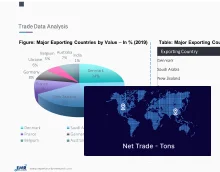
Get insights & trends for a competitive edge.
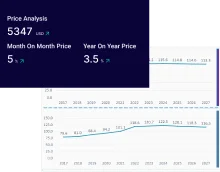
Track prices with detailed trend reports.
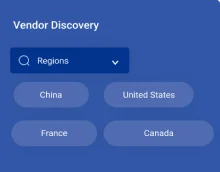
Analyse trade data for supply chain insights.
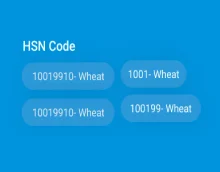
Leverage cost reports for smart savings
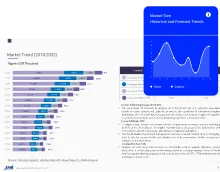
Enhance supply chain with partnerships.
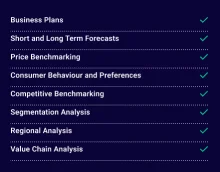
Connect For More Information
Our expert team of analysts will offer full support and resolve any queries regarding the report, before and after the purchase.
Our expert team of analysts will offer full support and resolve any queries regarding the report, before and after the purchase.
We employ meticulous research methods, blending advanced analytics and expert insights to deliver accurate, actionable industry intelligence, staying ahead of competitors.
Our skilled analysts offer unparalleled competitive advantage with detailed insights on current and emerging markets, ensuring your strategic edge.
We offer an in-depth yet simplified presentation of industry insights and analysis to meet your specific requirements effectively.
Share